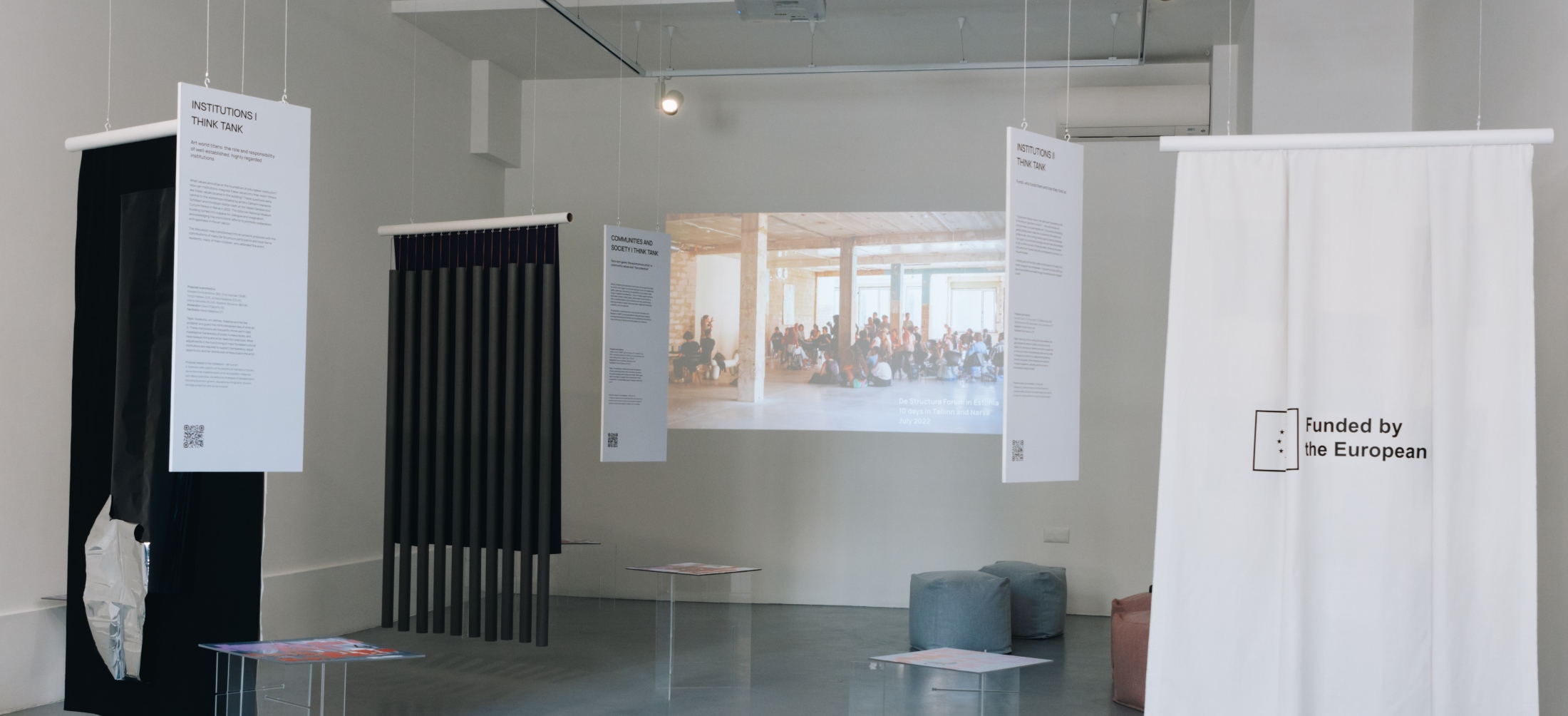
Q&A with De Structura curators Anastasia Lemberg-Lvova and Yana Ustymenko
Recently, the Kogo Gallery in Tartu, Estonia announced it will be holding a guest exhibition titled ‘Unveiling Structures’, showcasing the remarkable works of 36 contemporary artists and cultural professionals from Europe from July 20 to August 6.
The show was organised by De Structura, an initiative that aims to empower young art professionals through knowledge and connections and make their ideas heard by art institutions and decision makers. There will also be a series of online talks with the artists and art practitioners.
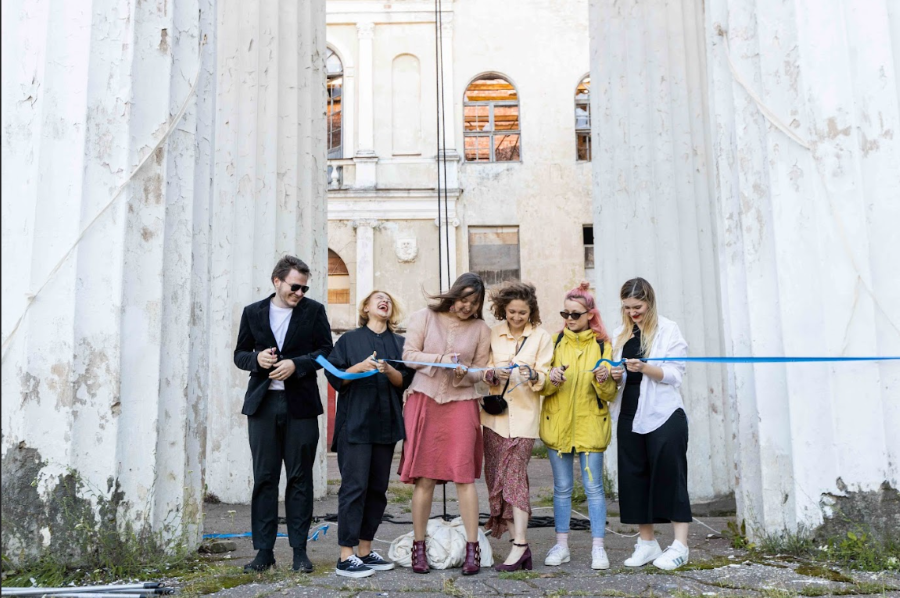 De Structura Forum public event in Narva, 2022 © Do Huyn Kang
De Structura Forum public event in Narva, 2022 © Do Huyn KangIn our ever-changing world, as we find ourselves constantly reflecting on the past, its values, and its impact on our present lives, ‘Unveiling Structures’ offers a fresh perspective. From a performance by Ania Duldiier exploring artificial intelligence and consciousness to an AI-generated newspaper by Wen Chen, ‘Unveiling Structures’ will showcase the insights of young artists, curators, researchers and other art professionals as they navigate the process of transformation and seek contemporary solutions to address historically inherited challenges.
To better understand the project and its significance, we talked with the De Structura founder Anastasia Lemberg-Lvova and curator Yana Ustymenko to learn about the concept of the exhibition, its highlights, and what it aims to challenge.
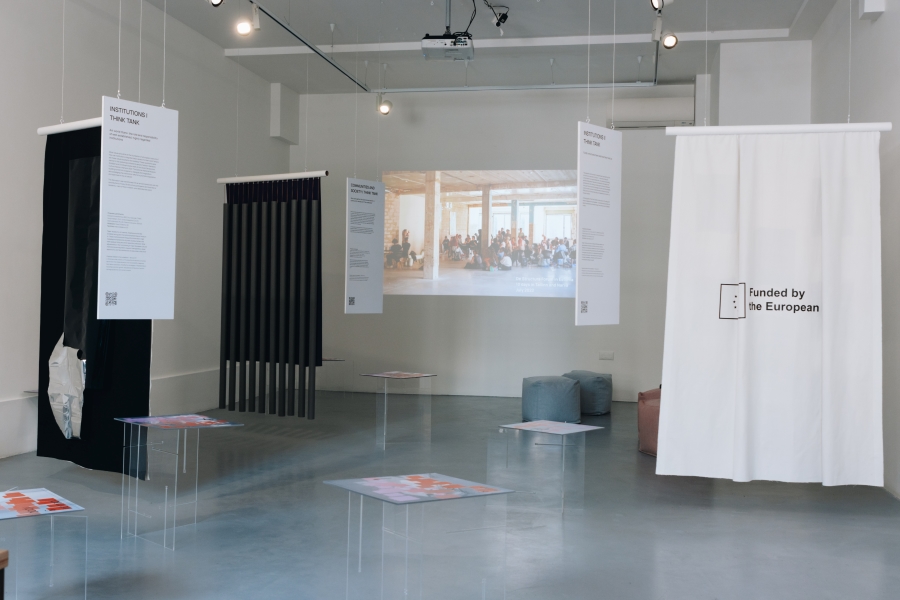 Installation view © Luisa Greta Vilo
Installation view © Luisa Greta ViloHow does this project differentiate itself from your previous experiences?
Yana: During my transition from school to university, I participated in several initiatives that focused on social involvement and policy-making, including Model UN and Active Citizens programme launched by the British Council. Both projects, to put it very simply, provide a platform to address different issues and perspectives and to encourage collaboration. Yet, the art sector somehow wasn’t much involved in any of these conversations. Later, during my studies and already in my professional life, I learned to focus more on what makes various disciplines different rather than looking into how they interconnect. It’s a natural process, to some extent, but also isn't very helpful in navigating through today’s much more complex world.
Anastasia: From 2010 until around 2020 I was an active member of the European Youth Parliament, going to over 40 events, running the nonprofit in two countries and taking part in international governance. During that time I experienced a working environment that was very empowering and that started lacking when I was transitioning into the art sphere, after receiving a degree in Fine Arts. So I decided to use my skills from the nonprofit and create a collaborative project that would provide young art professionals with the tools to be successful in their pursuit of a meaningful career and in bringing innovation to the art world. That led to organising a 10-day forum for 100 young European art professionals from 25 countries in Estonia in 2022 and a year full of collaborative projects that followed.
De Structura can be understood as a tangible display, as it is the logical continuation of the previous work that we’ve done. It does, however, have its own unique character.
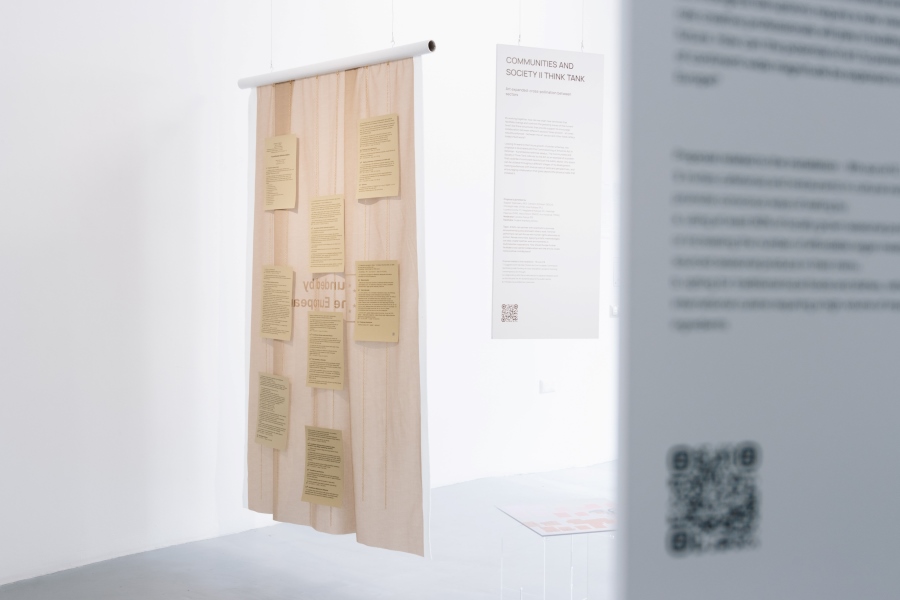
Art expanded: cross-pollination between sectors (an introduction to the report illustrated with the Commissioning of Artworks Act in Estonian - Kunstiteoste tellimise seadus). © Luisa Greta Vilo
In the context of this exhibition, what are the specific attributes that define a contemporary artist?
Yana: Recently, I came across a podcast where a speaker talked about the tendency to separate art from politics, emphasising their desire to keep the two distinct. However, what I see in my work and in our upcoming exhibition is a growing interest or perhaps necessity for artists and art professionals to address the many crises we are dealing with these days. When we just started working on ‘Unveiling Structures’ and were looking through the many artworks and curatorial projects of the De Structura participants, of course not all but certainly many brought these many crises to attention: How do AI and technology shape our perception of the world? What types of relationships do we build with the natural world in times of environmental crises? How do we emancipate from the values and rhetoric promoted by capitalist monoculture? How is our identity shaped by authoritative regimes? The list goes on. Again, this doesn’t apply to all the works, but this urge to speak up and bring attention to the many issues we are tackling today has a very strong presence in the exhibition.
Anastasia: Definitions vary depending on whom you ask, with some emphasising financial success and others looking for purity of artistic expression. What is true in any case, is that contemporary artists tackle topics heatedly discussed at political forums, touching on climate change, gentrification, displacement, security - that list is lengthy. Art, regardless of medium, communicates these challenges in a unique and impactful way. Contemporary artists are intertwined with the issues we strive to improve, shaping our future through diverse artistic expressions.
The concept of the exhibition is intentionally broad. Many artists work with performance art and sound, while others work with installations. How do you organise the space so that they can co-exist in one place?
Yana: Figuring out how to show a wide range of individual artworks was only one of the many challenges we faced in preparation for this exhibition. It certainly has been a challenge for us, to provide enough space to show this complexity without overwhelming the viewer. In the gallery, these different elements of the project are not separated by rigid borders, they are not scattered in different corners. They quite literally stand right next to one another. The question of coexistence for us is about different disciplines and roles in the art sector but also about the sector itself and its co-existence within a larger system.
Anastasia: Dialogue serves as a common thread throughout the exhibition, capturing the essence of diverse artworks. Even within the virtual rooms, artworks curated for the augmented reality exhibition engage in dialogue through the topics they explore. The presentation of the report is interlinked with the specific content, creating an installation that breathes life into otherwise dry and pragmatic ideas. Art has the power to effectively communicate concepts that may seem inaccesibleon paper.
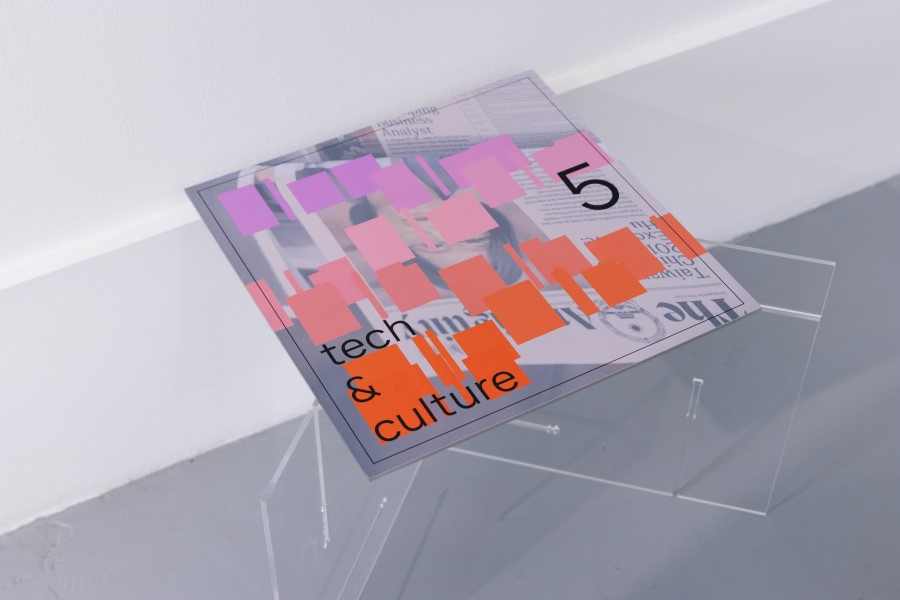
tech & culture virtual room featuring the work of Andreas Fürer and Sonjoi Nielsen, Wen Chen, Ganna Duldiier, Leonardo Tomassi © Luisa Greta Vilo
